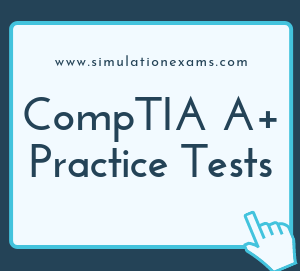1. If the CMOS setup is not properly setup the computer may ignore or not look at the CD-ROM as a bootable option. Verify in the CMOS that your settings are properly set to boot from the CD-ROM drive.
2. The Complementary Metal-Oxide Semiconductor (CMOS) allows the computer to store the Real Time Clock (RTC)and other device information even after the computer is switched off and on. This is achieved by using a battery just for CMOS.
3. Generally, these settings will be under the boot options. Setup your boot options similar to the below example.
4. If CD-ROM is listed after a device that is bootable it will boot from the other device before the CDROM. Verify that the devices before CD-ROM, such as floppy, do not have bootable media in them.
5. If the SCSI bus termination is not done, SCSI devices on the bus will not function properly. This is due to reflection of the signals at the end of the bus. To prevent this, both ends of the SCSI bus needs to be terminated. If one end of the SCSI bus is terminated, you may find intermittent problems. Never terminate the bus at a device connected in between.
6. If you are creating a Striped volume on a new Windows 2000 machine, it can only be created on dynamic disks. However, if you are upgrading a Windows NT computer to Windows 2000, any existing stripe set will be supported.
7. If you are finding that the Logical Disk > %Free Space counter is less than 10%, you might need to make additional free space available. This can first be done cleaning up the disk of any unwanted files, duplicate files etc. If required, additional physical disk may be provided.
8. If you have a standard desktop PC that uses integrated drive electronics (IDE) disk drives, then these will be detected during setup. If, however, you use SCSI disks or have Redundant Array of Independent Disk (RAID) storage systems, you will see, shortly after the reboot, the following line of text displayed at the bottom of the screen
9. "Press F6 if you need to install a third party SCSI or RAID driver..." Pressing F6 will start a dialog that allows you to configure and install the drivers for your SCSI or other disk subsystem controllers. This option is usually used on server platforms that use large-capacity, high-speed, fault-tolerant disk subsystems. For most PCs, however, you won't need to use this option.
10. If you want to format a drive and also make it bootable, you need to format with /s switch. By issuing this command, the boot files IO.SYS, MSDOS.SYS, COMMAND.COM get copied to the disk
11. It is obvious that you can get shock is due to sudden discharge of static electricity. Since the operator is touching the memory module when the discharge happened, it is most likely that the memory module may have internally damaged. This damage may or may not show up immediately. In any case, it always recommended to replace the statically damaged module with a good one. Follow anti-static precautions before touching any electronic components inside a PC.
12. It is recommended that the backup tape is stored at a location away from the building where the backup was taken. For most companies, backups contain important data and loosing backups may affect the continuity of one's business. If a backup is stored in the same building, it may get damaged in fire or any other natural calamities along with the computers. As a result, both the server, as well as back fail at the same time. Therefore, it is recommended to store the backup at a different location.
13. If the hard-disk is making sound, the most likely problem is that the hard disk read/write head is scratching the disk surface. It often results in the total failure of the disk. If you find that you can still read/write to the disk, backup the hard disk and replace immediately.
14. Low level formatting will erase the data on a hard drive permanently.
15. A hard disk should never be low level formatted at the customer premises. It is highly recommended that it is done at the manufacturer's or at any authorized center. It is very cumbersome to change the partition sizes, once the hard disk is partitioned and used. It may require backing up all the data and restoring after re partitioning.
Dynamic disks are not supported in portable computers and on external USB devices. The primary reason being that dynamic disks are used for enabling RAID configuration or back configuration, which requires two or more disks to be present. Usually, portable computers and USB hard disk drives come with single hard drive.

